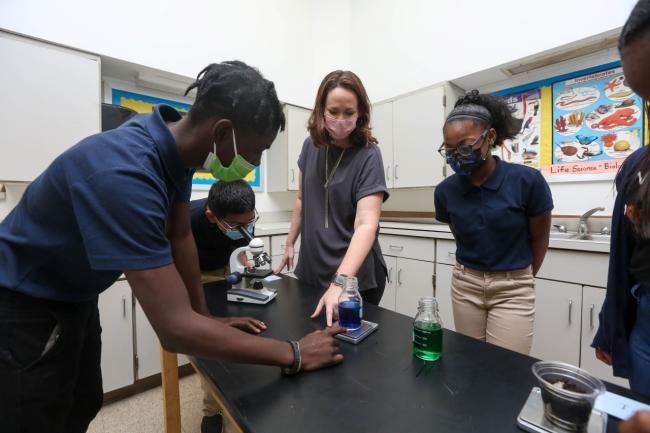MilliporeSigma Sparks Curiosity in the Minds of Future Scientists at KIPP St. Louis
By News Direct
For 10th-grade student Rashad Greenwood, hands-on science education, access to the right equipment, and an inclusive learning environment he received at KIPP St. Louis charter school are keys to achieving his dream of becoming a pharmacist.
MilliporeSigma’s* nine-year partnership with KIPP St. Louis Public Schools has helped Rashad, and nearly 2,200 other students, prepare for secondary education and careers in science, technology, engineering and mathematics (STEM) through the MilliporeSigma Curiosity Labs™, Curiosity LabsTM at Home, and Curiosity Cube® programs.
Since 2012, MilliporeSigma has invested more than $795,000 in the organization to inspire the next generation of scientific leaders. The company has helped to improve KIPP St. Louis’ science lab infrastructure and has also supported the expansion of its middle school science program’s curriculum with inquiry-based science experiments, professional development, and top-notch equipment.
This exposure to high-quality science curricula, supplies and hands-on experiments complemented by a multi-dimensional STEM industry partnership has made an impact. Students are learning new scientific concepts and stimulating scientific thinking, helping them to build confidence and encouraging them to be curious about the world around them. For example, Rashad won second place in his school’s first science fair during the 2020 school year. “I was nervous because I never participated in a science fair before, but I ended up presenting an experiment where I used electrolysis to separate hydrogen and oxygen. It was hard, but I learned a bunch.”
“The most rewarding part about teaching science is seeing kids learn through discovery and exploration,” said Jennifer Burris, a fifth-grade KIPP St. Louis science teacher. “The robotics and electricity lessons from MilliporeSigma challenged them to learn from their mistakes and keep trying until they were successful.”
Read the full article here.
